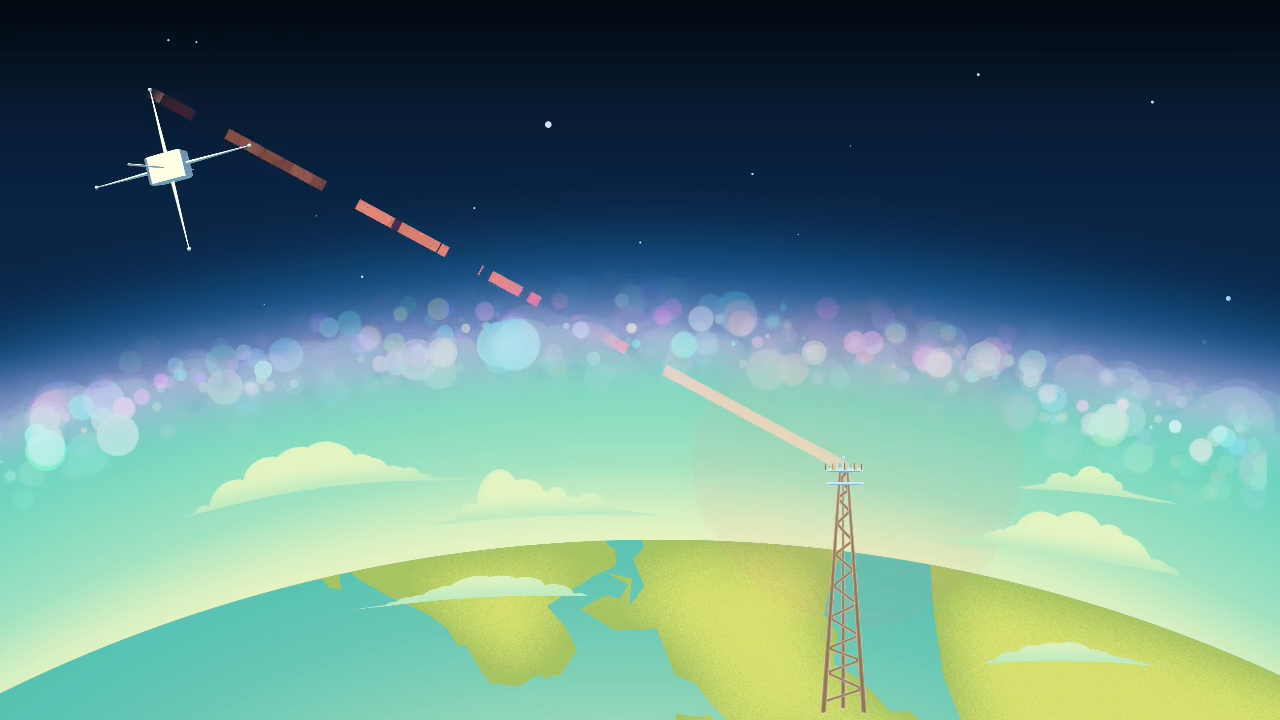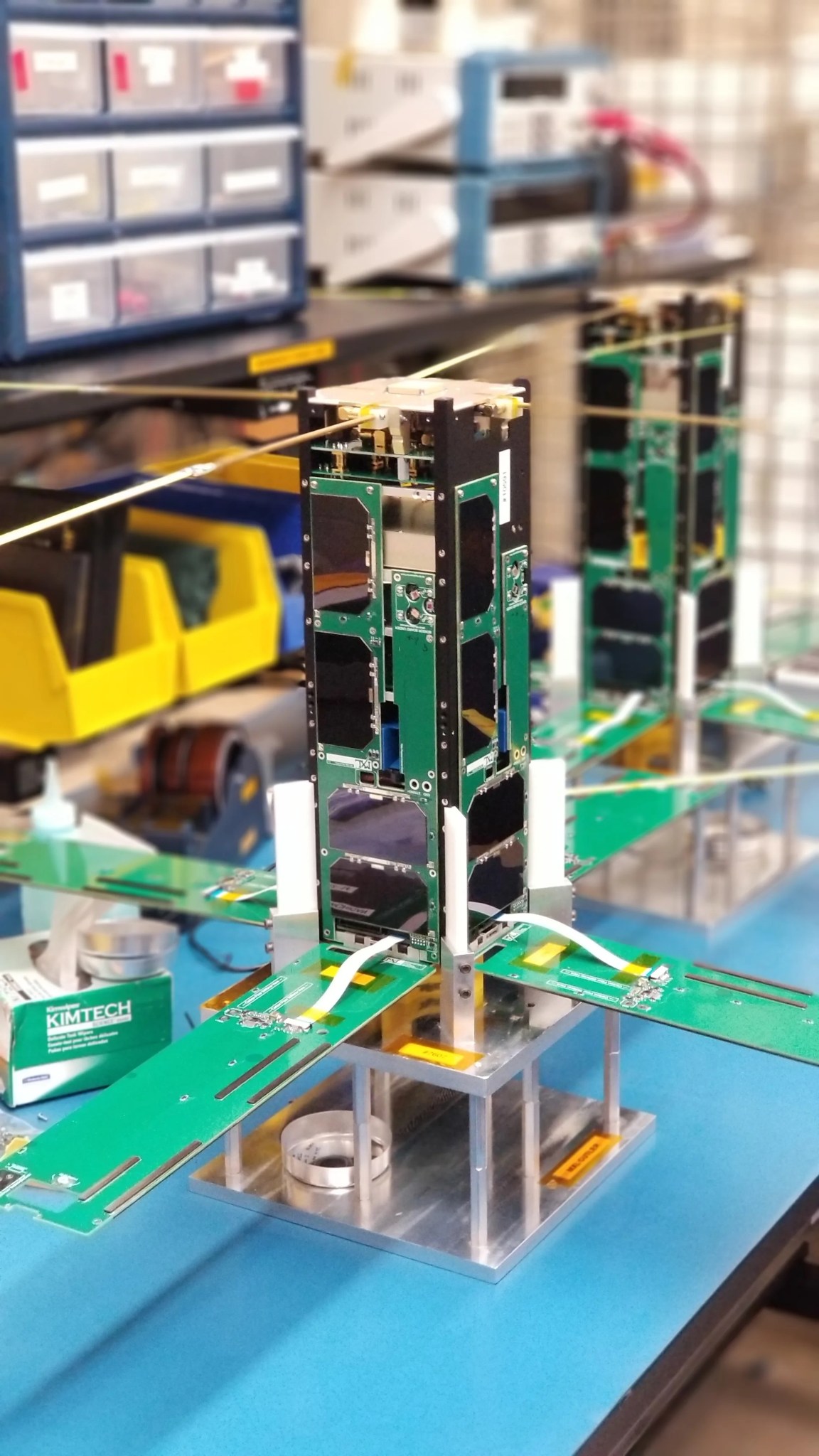E-TBEx: Enhanced Tandem Beacon Experiment
Tandem Beacon Experiment

NASA's Enhanced Tandem Beacon Experiment, or E-TBEx, mission explores bubbles in the electrically-charged layers of Earth's upper atmosphere, which can disrupt key communications and GPS signals that we rely on down on the ground. Such bubbles currently appear and evolve unpredictably and are difficult to characterize from the ground. But the more we understand them, the more we can mitigate their disruption of the myriad of radio signals that pass through Earth's upper atmosphere.
To study these bubbles, two CubeSats emit signals in a handful of frequencies to receiving stations on the ground. From there, scientists can measure disruptions in the signals to determine how they're affected by these upper-atmosphere bubbles.
The two primary CubeSats of the E-TBEx mission also work in concert with the six satellites of NOAA's COSMIC-2 mission. The COSMIC-2 satellites carry beacons similar to those on the CubeSats, so changing orbital conjunctions among the eight spacecraft give scientists the chance to study these bubbles from multiple angles at once.
Science
E-TBEx's main science goal is to study the formation of bubbles in Earth's electrically-charged upper atmosphere, called the ionosphere.
Because they're above the ultraviolet radiation-blocking ozone layer, the particles of the ionosphere have been cooked into an electrically-charged soup — called plasma — by the Sun's powerful radiation. Plasma behaves differently than the gas we're familiar with here near Earth's surface: It responds to electric and magnetic fields in entirely different ways.
Factors from near Earth's surface, like weather, and changing conditions in space called space weather can influence the winds and the electric and magnetic fields to push around the gases in the ionosphere — making it hard to predict what its state will be at any given time. In particular, structured, less-dense bubbles of plasma form within pockets of denser plasma near Earth's magnetic equator, then shift and dissipate, influenced by a poorly understood mix of these factors.
That unpredictability can create problems, because the ionosphere is a crucial region for space activity and technology crucial our society. This region is home to the International Space Station and many other low-Earth orbiting satellites, and it's also the channel through which many of our communications and navigations signals — like radio and GPS — pass.
Many of these signals are radio waves: They are types of light, but in a range that our eyes can't see. But when the signals pass through structured bubbles plasma in the ionosphere, they can be muddled. Information is embedded into signals by precisely-controlled changes in their frequency, amplitude or phase: A signal's frequency is the number of wave peaks and valleys that pass by per second — radio waves can have anywhere from 3,000 to 300 billion waves per second; the amplitude is the strength of the signal; the phase refers to the relative position of wave peaks between two or more signals. So, if the bubbles distort any of these characteristics, it can make the signal unintelligible.
E-TBEx studies the evolution and impacts of the ionospheric bubbles on communications signals by sending signals with precise characteristics from the CubeSats in low-Earth orbit to receiving stations on the ground — right through the ionosphere, and, sometimes, through these structured bubbles of plasma.
The CubeSats send beacons at three frequencies — 150 megahertz, 400 megahertz and one gigahertz — all with the same phase. When the reach the ground receiving stations, scientists can tell if the signals' phase, amplitude or frequency was disrupted on its journey through the ionosphere. This information allows the team to deduce the total density of any ionospheric bubble the signals traveled through, while also characterizing its effect on signals at different frequencies.
Ultimately, this research could help inform strategies for making communications and navigation more robust, allowing users — including the military and commercial aircraft operators — to shift to a different frequency, change information-encoding techniques, or delay key communications if an ionospheric bubble is spotted.
The science team also uses observations from other missions about the state of space weather and atmospheric conditions to trace possible causes for the ionospheric bubbles as they form — with a particular focus on large terrestrial storm systems, which could launch waves upwards that create these bubbles.
Instruments and Orbit
In addition to the beacons on the E-TBEx CubeSats and the COSMIC-2 spacecraft, E-TBEx relies on a network of ground receiving stations. These stations use software-defined radio, which allows receivers to tune to multiple frequencies with minimal hardware.
The E-TBEx CubeSats fly in an elliptical orbit inclined at 28 degrees.
































